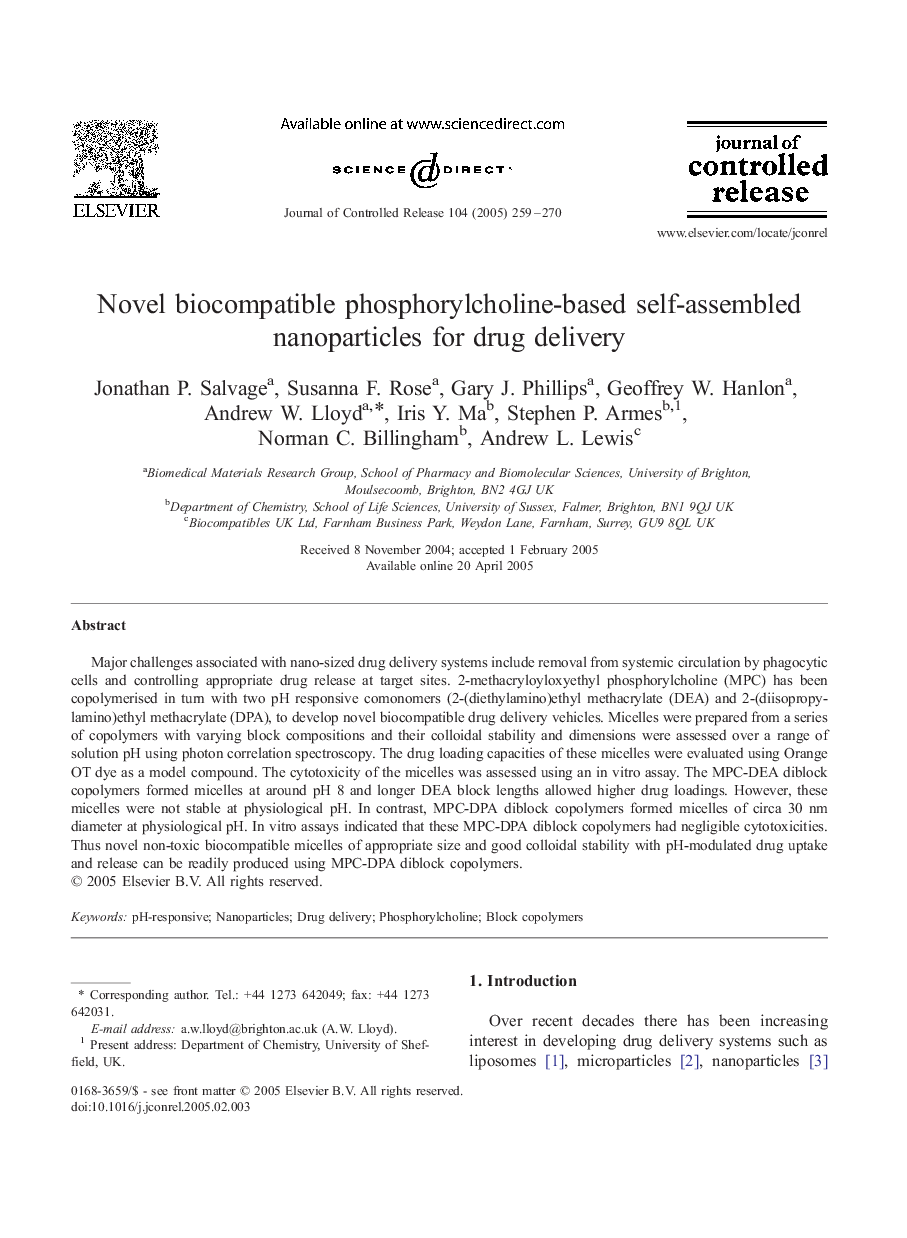| Article ID | Journal | Published Year | Pages | File Type |
|---|---|---|---|---|
| 10613505 | Journal of Controlled Release | 2005 | 12 Pages |
Abstract
Major challenges associated with nano-sized drug delivery systems include removal from systemic circulation by phagocytic cells and controlling appropriate drug release at target sites. 2-methacryloyloxyethyl phosphorylcholine (MPC) has been copolymerised in turn with two pH responsive comonomers (2-(diethylamino)ethyl methacrylate (DEA) and 2-(diisopropylamino)ethyl methacrylate (DPA), to develop novel biocompatible drug delivery vehicles. Micelles were prepared from a series of copolymers with varying block compositions and their colloidal stability and dimensions were assessed over a range of solution pH using photon correlation spectroscopy. The drug loading capacities of these micelles were evaluated using Orange OT dye as a model compound. The cytotoxicity of the micelles was assessed using an in vitro assay. The MPC-DEA diblock copolymers formed micelles at around pH 8 and longer DEA block lengths allowed higher drug loadings. However, these micelles were not stable at physiological pH. In contrast, MPC-DPA diblock copolymers formed micelles of circa 30 nm diameter at physiological pH. In vitro assays indicated that these MPC-DPA diblock copolymers had negligible cytotoxicities. Thus novel non-toxic biocompatible micelles of appropriate size and good colloidal stability with pH-modulated drug uptake and release can be readily produced using MPC-DPA diblock copolymers.
Related Topics
Physical Sciences and Engineering
Materials Science
Biomaterials
Authors
Jonathan P. Salvage, Susanna F. Rose, Gary J. Phillips, Geoffrey W. Hanlon, Andrew W. Lloyd, Iris Y. Ma, Stephen P. Armes, Norman C. Billingham, Andrew L. Lewis,
